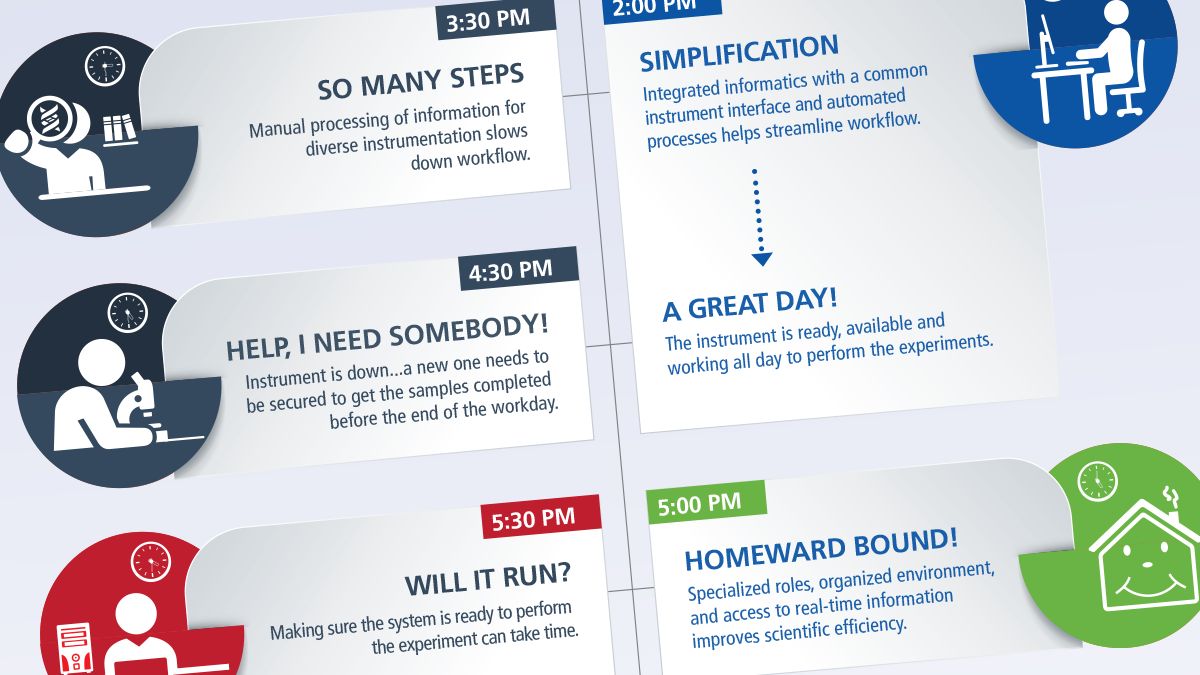INFOGRAPHIC: 6 Consequences of Lab Inefficiency
Productivity is the engine of an efficient laboratory. Whether you’re a large- or small-scale lab, process optimization is crucial to ensure fast results and huge cost savings.
One study found that lab analysts waste 25% of their time on instrument maintenance, which means fewer hours spent on doing their jobs effectively. Would you expect a doctor to take the time to repair an MRI machine? With all the important patients he or she sees per day, probably not.
A day in the life of an efficient, orderly lab starts on time, runs smoothly, and ends when expected. So what happens in an inefficient lab?
6 Consequences of Lab Inefficiency
- Getting a late start: Lab test setup is too complicated due to lack of visibility into lab assets and redundant informatics.
- Can’t find the right consumables and accessories: Unorganized storage areas send lab techs on the hunt for equipment, which delays testing.
- Skipped lunches: Falling behind on daily tasks is common among inefficient labs and making up the time is always a challenge.
- Decreased workflow: Manually processing information across diverse instrumentation slows down workflow.
- Broken instruments: Without a readily available source for lab maintenance, workers are forced to troubleshoot or wait for service to get back up and running.
- Late nights: To complete the required samples for the day, late nights are inevitable.
Sound familiar? It doesn’t have to. Download our infographic: How Efficient Is Your Day in the Lab?
Find out how much more productive your lab can be when the proper efficiencies are in place.

